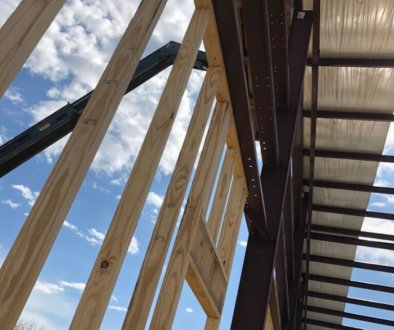HVAC Energy Solutions That Can Save Schools Money
 Some universities have lowered their energy use 20%-40% by implementing some of the latest innovations in air conditioning and heating energy solutions technology. By contracting an expert HVAC team to apply green technologies like thermal energy storage or installing advanced wireless energy management solutions, a number of colleges and universities are reducing their carbon footprint as well as their operational expenses.
Some universities have lowered their energy use 20%-40% by implementing some of the latest innovations in air conditioning and heating energy solutions technology. By contracting an expert HVAC team to apply green technologies like thermal energy storage or installing advanced wireless energy management solutions, a number of colleges and universities are reducing their carbon footprint as well as their operational expenses.
When facility managers at Nova Southeastern University in Davie, Florida, saw their energy costs rising they implemented an air conditioning energy solution that would not only save money but would also provide cooling power for the entire 330-acre campus. Nova turned to thermal energy storage technology that included 2,300-ton chillers housed in a 46,505 square foot facility, one of the largest in the U.S. The facility supports equipment that provides building oversight management, which maintains real-time monitoring of flow and temperature to maximize energy efficiencies.
Retrofitting Energy Efficient Air Conditioning in Schools
Although Nova Southeastern University proved to be the perfect example of prudent planning and preparation, the same principles applied to a new structure can be used to transform air conditioning in existing schools.
One example is the thermal energy storage system installed at Duquesne University in Pittsburg, PA. The university implemented a schematic that stores ice in tanks within the universities storage areas and slowly releases the ice to cool the college. The university used the thermal energy storage system in conjunction with an existing heat and power plant method for dual HVAC use.
According to Duquesne University’s facility manager, one of the biggest advantages to offering this type of air conditioning technology is that the school added 6,000-ton-hours of cooling without having to add a cooling tower. The university will save a substantial amount of money in the long term from having a 1,200-ton chiller to act as the air conditioning solution during peak school times. According to experts retrofitting an energy efficient air conditioning system should pay for itself within 4 to 7 years post installation.
Retrofitting an air conditioning system may be only the first step in the process of increasing energy efficiency. A study comparing the energy use in two middle school portable classrooms found that when retrofitting to achieve energy efficiency schools should look beyond the air conditioning system and also examine lighting and roofing materials. When one portable installed an energy efficient lighting system, replaced the roofing with white metal panels and installed a new air conditioning system, the approximate energy savings was 45%.
What to look for in Commercial HVAC Contractors
Whether you are examining ways to improve overall indoor air quality or seek to lower energy costs at your school, hiring the right HVAC contractor can make a difference. During your contractor interviews, ask the right questions to assist with your decision:
- What type of energy solutions can you offer to reduce our schools overall energy expenses?
- How can we leverage the use of wireless and web-based applications to monitor flow and temperature?
- How much money can our school expect to save after retrofitting new HVAC technology?
- What type of support does your company offer? 24-hour service or emergency calls.
- How many schools or universities have you worked with and what was the outcome?
- How long will it take to install the new system at our school?
Examining other factors such as the contractor’s licenses and asking for references should top your list; however, working with a company that can provide a proven track record of successful energy savings should contribute to your decision.




